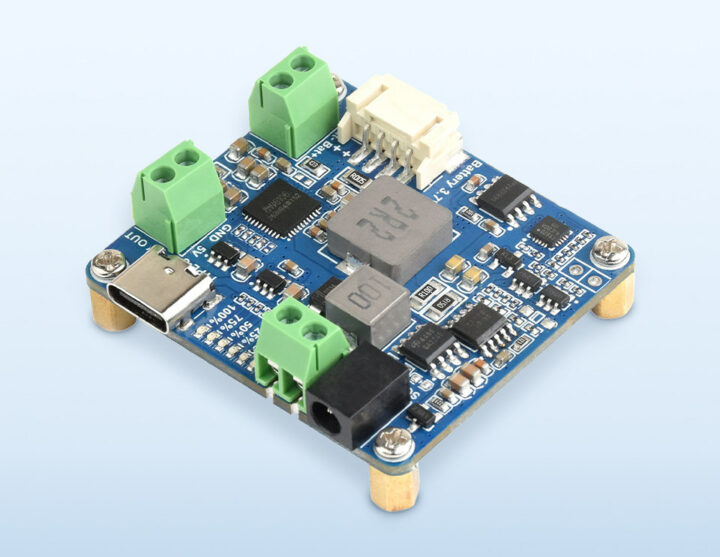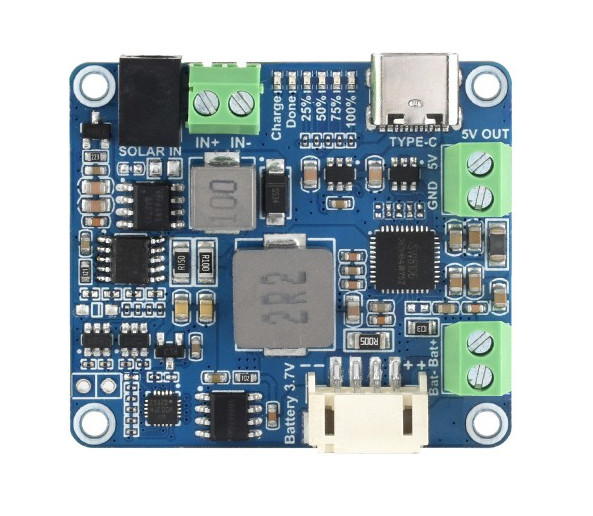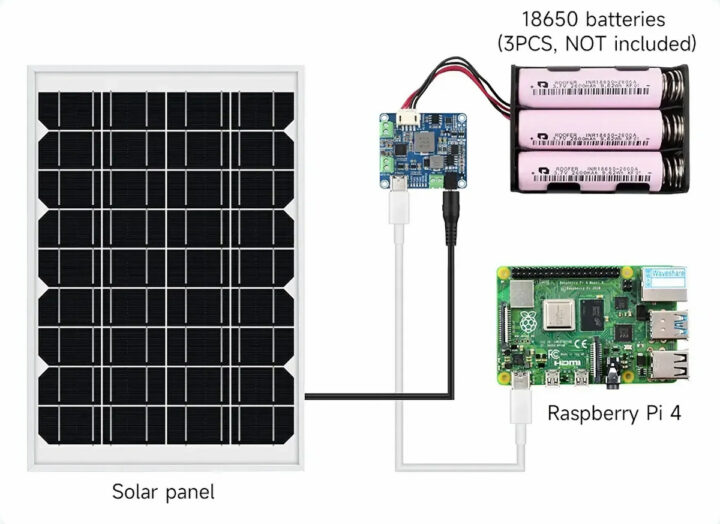Waveshare Solar Power Manager Module (D) is a compact power module for solar panels with support for 6V to 24V input, MPTT (Maximum Power Point Tracking), and battery charging. It outputs 5V up to 3A via a USB-C port or terminal block and should be suitable for a range of projects.
A few weeks ago, we wrote about the FireBeetle 2 ESP32-C6 IoT development board with DFRobot highlighting support for solar charging of lithium batteries thanks the the CN3165 chip. But with a range of just 4.5 to 6V for solar panel input and a lack of support for MPTT, several readers were unimpressed by the solution. The Waveshare Solar Power Manager Module (D) recently popped up in my news feed, and I thought it might be worth a look.
Waveshare Solar Power Manager Module (D) specifications:
- Solar panel input
- 6V to 24V via DC jack or 2-pole screw terminal with input reverse connection protection
- CN3791 solar power management chip with support for MPPT (Maximum Power Point Tracking) function to maximize the efficiency of the solar panel.
- USB Input – 5V up to 5A via USB-C port (USB PD support)
- 5V output – Up to 3A via screw terminal or USB-C port (Note: the USB-C port can be used as either 5V output or input)
- SW6106 USB power management chip for charging and 5V/3A boost output
- Battery support
- 3.7V Li-ion battery (an optional 18650 battery holder is available)
- Charging
- Via Solar panel, power adapter, or USB-C port
- Recharging cutoff voltage – 4.2V +/- 1%
- Solar panel charging efficiency – About 78%
- USB charging efficiency – About 93%
- Over discharging protection voltage – 3.0V +/- 1%
- Batteries boost output efficiency – About 90%
- Quiescent current (Max) – <2mA
- Misc – 6x LEDs to monitor charge status and levels
- Safety – Overcharge and over-discharge protection (using XB8886A), reverse, overheat, and over-current protection
The Wiki has a few more technical details including PDF schematics. It looks quite straightforward to use as shown in the diagram with a Raspberry Pi 4 below. Simply connect some batteries to the 4-pin JST connector, connect a solar panel to the DC jack or 2-pin terminal, and the target device to either the USB-C port or 2-pin 5V output terminal. As I understand it, it’s possible to charge the batteries through the USB-C port first if needed.
Waveshare is selling the Solar Power Manager Module (D) on Aliexpress for $17.99 including shipping, but most people might want to spend 90 cents extra to get a battery holder taking three 18650 batteries. While researching the topic, I also noticed some more basic (and cheaper) solar power modules based on the same CN3791 such as the Taidacent CN3791 solar charger going for $9.58 on Amazon.

Jean-Luc started CNX Software in 2010 as a part-time endeavor, before quitting his job as a software engineering manager, and starting to write daily news, and reviews full time later in 2011.
Support CNX Software! Donate via cryptocurrencies, become a Patron on Patreon, or purchase goods on Amazon or Aliexpress. We also use affiliate links in articles to earn commissions if you make a purchase after clicking on those links.








Good idea to have a pd-enabled port for base charging if the battery cells and let the solar panel top-up.
I also really like the screw terminals, for devices not using usb, and screw holes
Overall, seems like a very useful bit of kit.
Agreed, just what you said.
Shame it does not support 3.3V LiFePO4 batteries, as they are much more suitable for constant cycling (such as in this application) than Lithium-Ion.
Lithium-ion are fine as well as long as you slightly maintain a reasonable cut-off voltage and reduce the max charge voltage (typically x10 cycles for each 0.1V). At 3.9V you have virtually unlimited charging cycles.